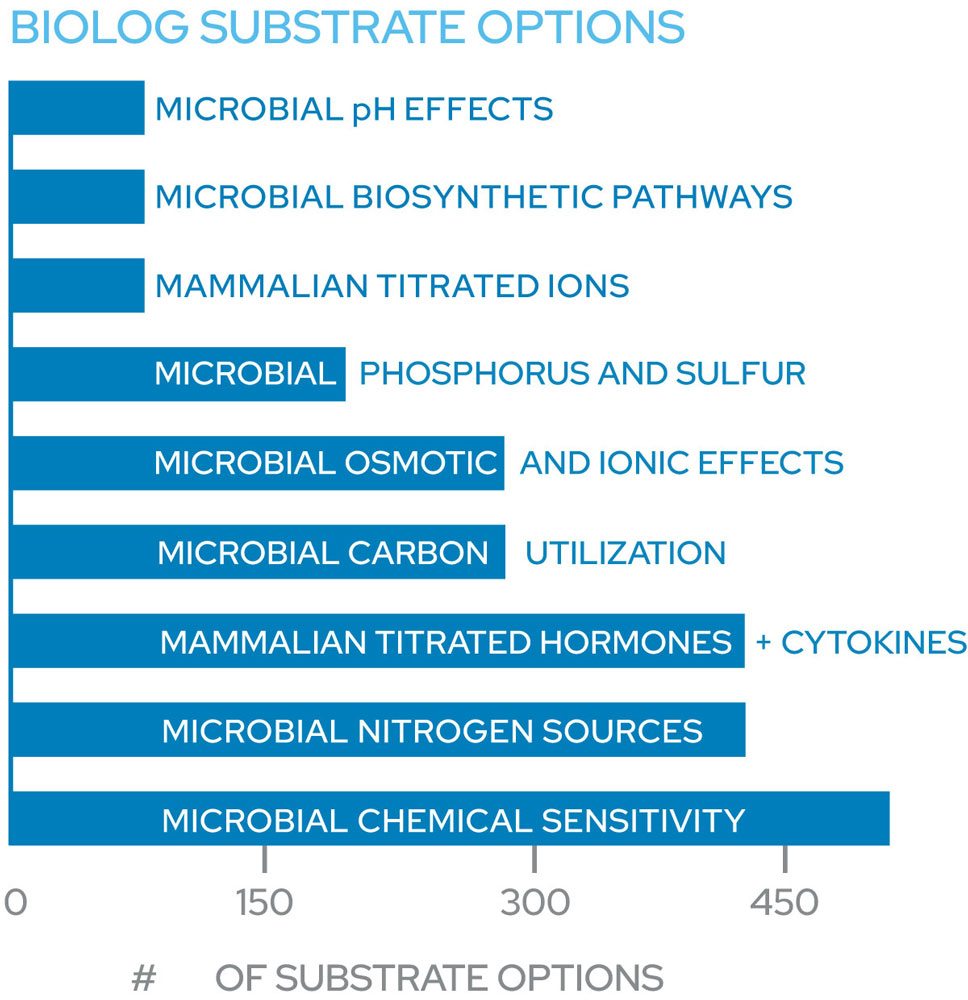
Phenotype MicroArray™ Mammalian assays are cell-based assays used to investigate up to 1,400 metabolic and chemical sensitivity phenotypes.
They use 96-well plates pre-loaded with carbon and nitrogen substrates, ions, stimulatory and inhibitory compounds such as hormones/cytokines and anti-cancer agents. Cells of interest are added to the plates along with Biolog’s proprietary redox dye. The generation of energy-rich NADH by the cells reduces the redox dye and brings about a color change which can be read and analyzed by Odin.
Applications
Phenotype MicroArray Mammalian Assays can be used for research in a diverse range of applications, including:
- Correlating phenotypes with genotypes
- Cell line and bioprocess improvement
- Cellular metabolism, metabolic disorders, nutrition
- Cell energetics, growth and death
- Cell line QC and authentication
- Drug discovery research and toxicity screening
- Studying metabolic reprogramming in cancer and anti-cancer drug sensitivity
There are 14 panels designed to interrogate metabolic pathways along with ionic, osmotic and pH effects, and 10 panels to assess the sensitivity to various antimicrobials with different mechanisms of action.

| Plate Name | Description |
|---|---|
| PM-M 1-4 Microplates | Mammalian metabolite utilization assays |
| PM-M 5 Microplate | Mammalian cation/anion sensitivity assays |
| PM-M 6-8 Microplates | Mammalian hormone/metabolic effector assays |
| PM-M 11-14 Microplate | Mammalian chemosensitivity assays |
When using Phenotype MicroArrays, you need an instrument that will read at the right wavelengths and measure the changes kinetically over time at short intervals. You also need a software package to help you analyze all that data and identify the differences between your samples. With the Odin™ platform you can characterize phenotypes by monitoring growth curves and cell metabolism kinetics for microbial or mammalian cells for up to 50 plates at the same time. When combined with Phenotype MicroArrays, Odin can analyze up to 4,800 conditions unattended for hours or days.
- Odin™ family: Fully automated incubator/readers with up to an 8-plate capacity (Odin VIII) or a 50-plate capacity (Odin L) with software that can identify aerobic and anerobic bacteria, yeast, filamentous fungi and allows you to do phenotypic analysis.
Visit Biolog's website for more information: Mammalian Phenotype
